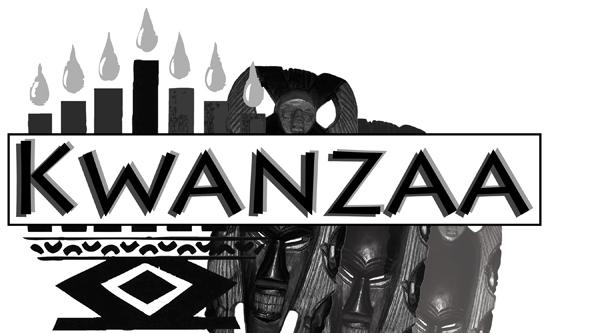Time to celebrate: Kwanzaa

Time to celebrate: Kwanzaa
December 13, 2007
It’s the time of year when people celebrate the African-American and Pan-African holiday, Kwanzaa. But the cultural holiday that celebrates family, community and culture could be on the brink of disappearance.
Kwanzaa is not the first holiday that comes to mind in the for several Sacramento State students who agree they do not hear much about the celebration.
Tayler Reynolds, junior child development major, said she does not know much about it.
“I never really hear anything about Kwanzaa,” she said. “My family has always celebrated Christmas, and I don’t know anyone who follows (Kwanzaa).”
Bryan Boggs, senior kinesiology major, knew a few of the basics about Kwanzaa, but also admitted that he does not know much.
“I know it’s an African-American holiday that is based around seven principles, but that’s about all I know,” Boggs said. “Since Christmas is the most popular holiday, that’s all you see or hear about.”
According to its official website, Kwanzaa was created in 1966 by Maulana Karenga, a professor at CSU, Long Beach. He created it to support the basic African principles, known as Nguzo Saba or the Seven Principles. They are unity (umoja), self-determination (kujichagulia), collective work and responsibility (ujima), cooperative economics (ujamaa), purpose (nia), creativity (kuumba) and faith (imani) and together are the building blocks of the world African community.
Seven candles, which represent the principles, are placed in the Kinara, or candle holder, and are lit one-by-one over the seven days of Kwanzaa. The center candle is black, standing for unity, and is lit the first day. The three candles to the left of the black one are red and to the left are green candles. After the black candle, the rest are lit from left to right until the final day.
Before the candles are lit, they must be placed on top of a mat called the mkeka, which is on a table covered by an African cloth. Other ceremonial pieces are placed on the mat, as well.
Tiamoyo Karenga, assistant to Maulana Karenga, said even though some people do not hear much about Kwanzaa, it does have many followers around the world.
She said Kwanzaa is celebrated by over 30 million people throughout the African community around the world. It’s also celebrated on every continent in the world, she said.
Similar to Christmas, gifts are given during Kwanzaa, but mostly to children. These gifts must include a book to stress the importance of education and a heritage symbol to represent the commitment to history and tradition in the African culture, Karenga said.
After hearing the traditions of Kwanzaa, Billy Felix, a student, said he never realized how interesting it is.
“I can’t believe Kwanzaa isn’t more popular. The steps of it seem much more meaningful than just presents under a tree,” he said.
Ethnic studies professor Alexandre Kimenyi said the reason why Kwanzaa is not well-known is because of the intolerance many people in the United States have toward the unknown.
Kimenyi said that no matter what, minority groups must keep their beliefs so that they are not completely erased from American culture. He believes that this very ideal is what is creating changes, and one of the reasons that Kwanzaa’s popularity is slowly growing.
“Fortunately many people have understood the importance of accepting multiculturalism,” Kimenyi said. “All cultures are complementary because no single one has a monopoly on truth.”
Tygenae Harris can be reached at [email protected]
Click here to read about another lesser-known holiday, Hanukkah.
Click here to read about what many atheists do during this season of religious holidays.




























































































































